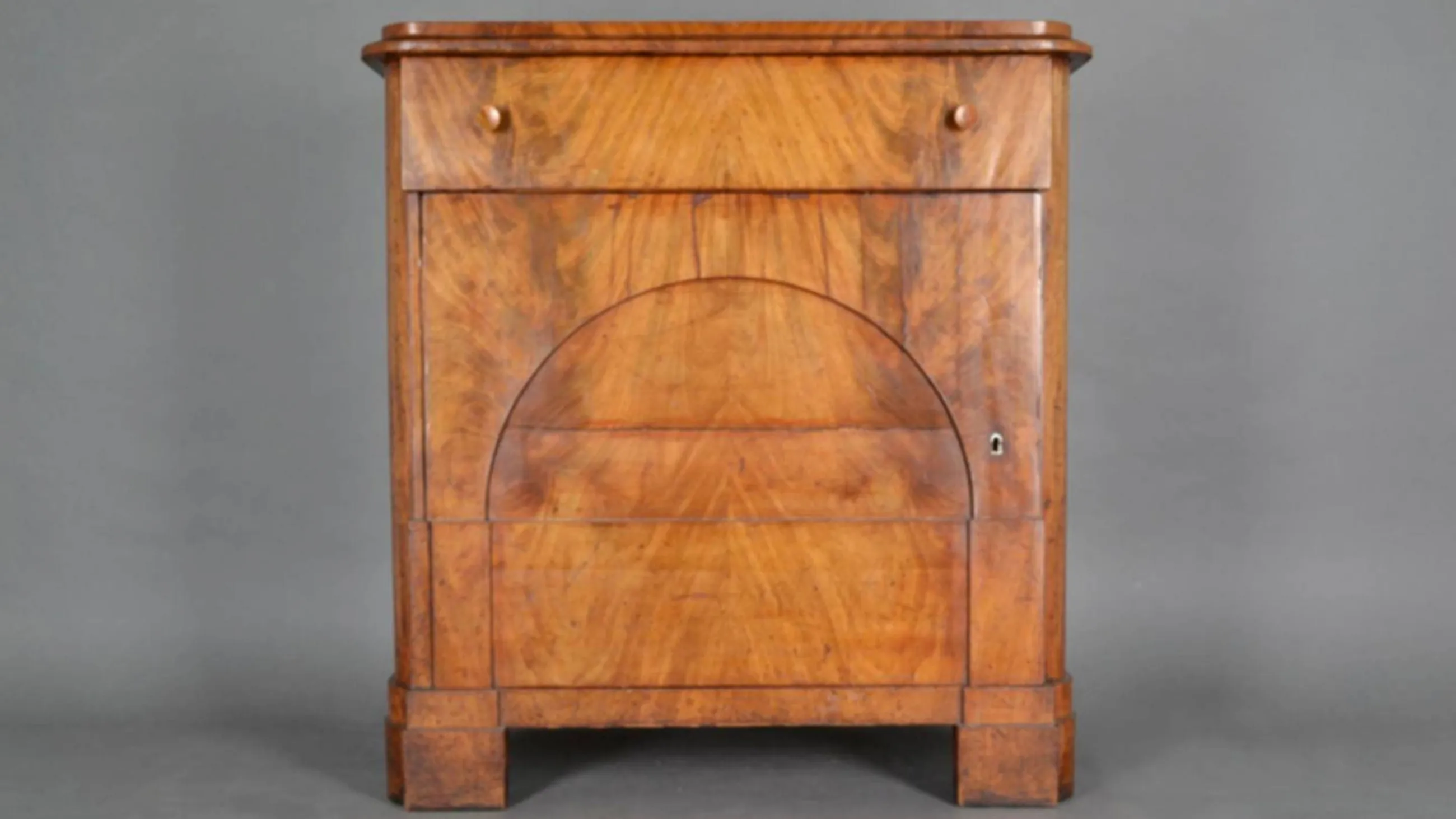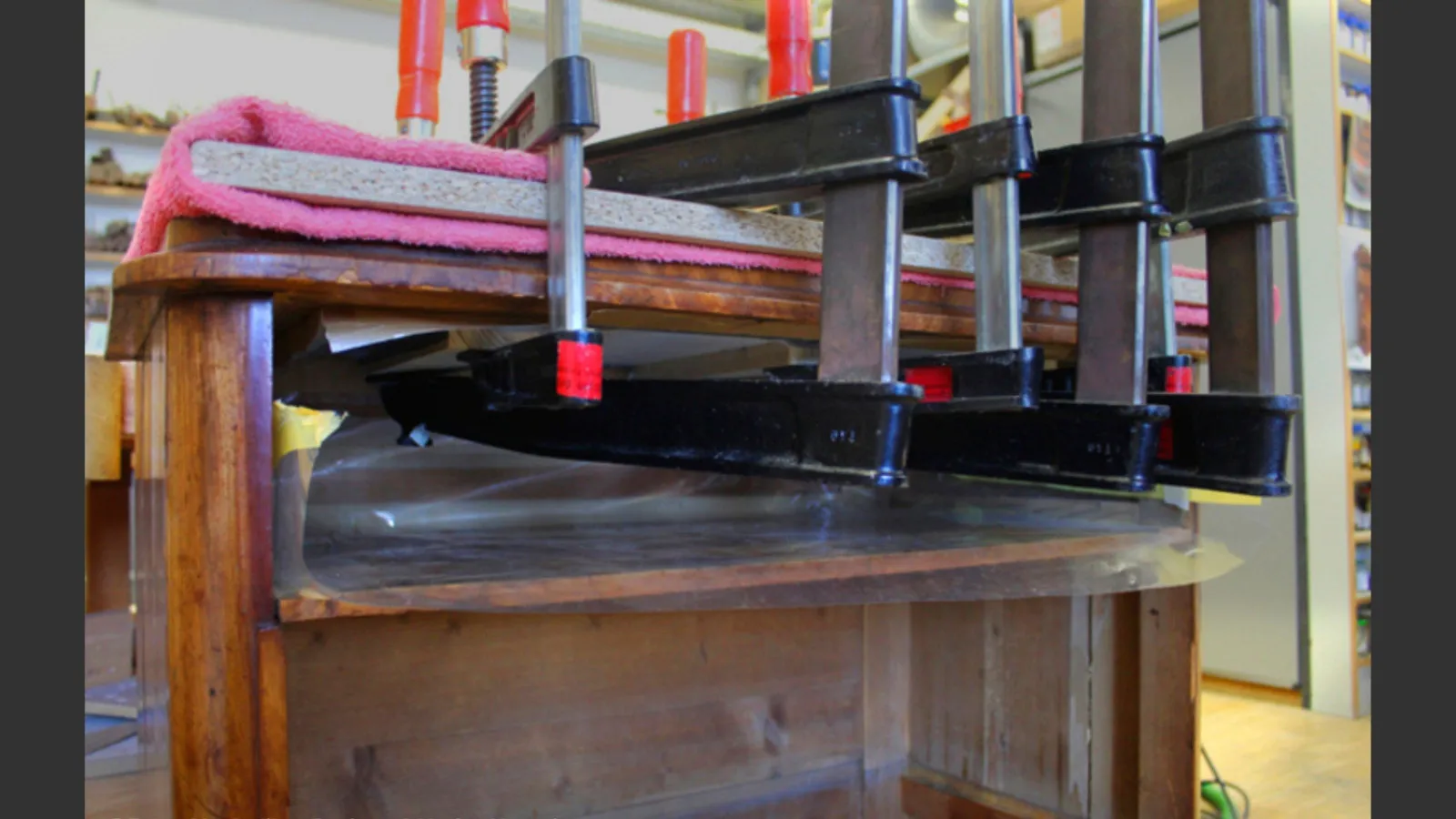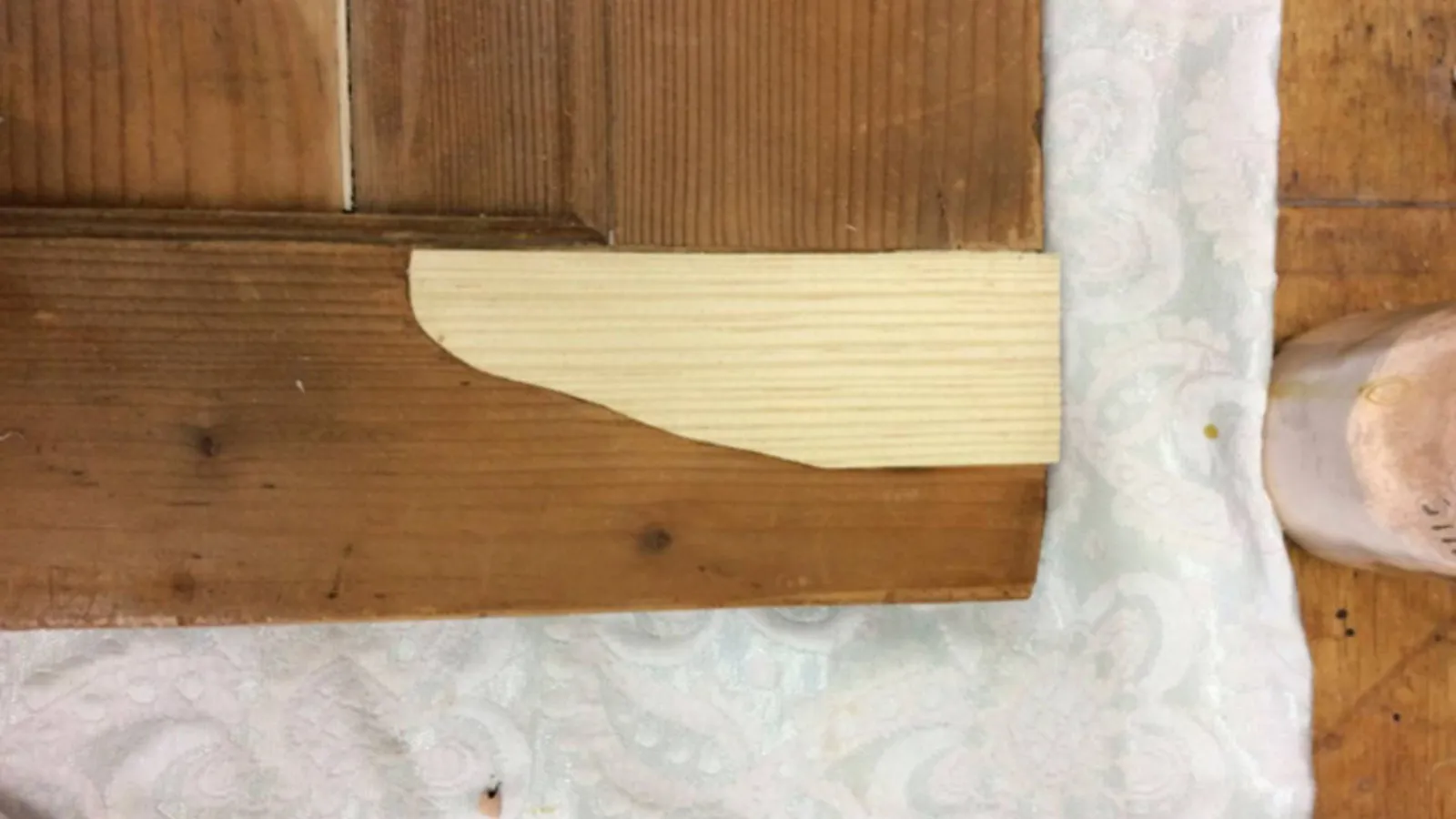Wood | Restoration of a Piece of Biedermeier Furniture from a Private Collection
The object to be restored is a chest of drawers whose exact origin is unknown. It was probably produced in northern Germany. Stylistically, the furniture can be assigned to the Biedermeier period.

Loan: Private property, Potsdam
Object: Blender chest of drawers
Date: probably between 1815 - 1850
Project description
The object to be restored is a chest of drawers whose exact origin is unknown. It was probably produced in northern Germany. Stylistically, the furniture can be assigned to the Biedermeier period. This stylistic epoch follows on from the Empire and mainly produces furniture with smooth, calm surfaces and vividly drawn veneer patterns.
The Blender chest of drawers owes its name to the fact that it pretends to have a different construction than it actually does. The carcass is made of pine and veneered with mahogany. Furthermore, the types of wood pear and oak can be identified on the drawer knobs and on the feet of the chest of drawers. A beautiful design detail of the furniture is the blind arch glued onto the door, which visually emphasises the pronounced mahogany pyramid frieze once again.
Conservation and restoration
The conceptual ideas developed by the students, which included conservation and restoration measures, were based on the owners' desire to use the object as storage furniture. Restoring the function of the chest of drawers was therefore the first priority.
After the identification of the object, the technological examinations and the damage assessment, the restoration measures began. In addition to extensive cleaning, cracks in the top plate and the sides were closed with balsa wood to counteract the ingress of dust. To make the drawers usable again, their sides and bottoms were made passable by gluing and planing. Furthermore, runners made of pine wood were added and reinforced with HPL material to prevent new rapid wear. In addition, the top plate, which had warped and thus impaired the aesthetics of the furniture, was reshaped. With the help of compresses and allowances, a reshaping could be achieved, which was secured with a counter veneer on the underside of the panel. Additions to missing parts were made with mahogany veneer and glutin glue.
After restoration, the chest of drawers was handed over to private ownership and once again meets both the aesthetic and functional requirements of the owner.
Project participants
Project support

Project support

Students
- Maximilian Bock
- Martha Marzahn


